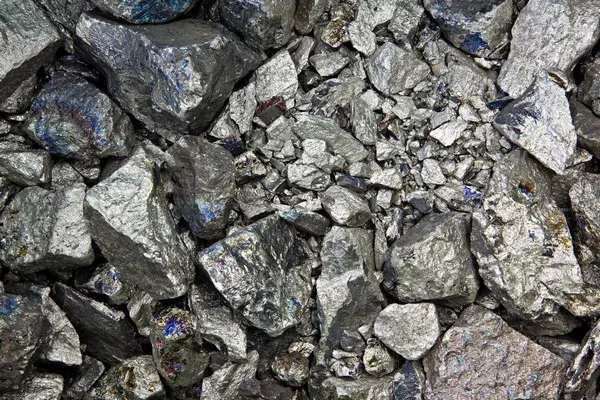Nickel, a versatile and essential metal, plays a pivotal role in various industries, from stainless steel production to electric vehicle batteries. As the demand for nickel continues to rise, understanding the geographical distribution of nickel reserves becomes crucial for both economic and strategic reasons. In this comprehensive guide, we will explore the top 8 countries with the largest nickel reserves, delving into the geological, economic, and geopolitical factors that contribute to their prominence in the global nickel market.
Top 8 Countries with Largest Nickel Reserves in the World
1. Indonesia:
Indonesia, nestled in the heart of Southeast Asia, stands as the undisputed leader in global nickel reserves. The archipelagic nation boasts vast nickel deposits, primarily found in Sulawesi and Halmahera. The country’s nickel reserves are a critical source for the stainless steel industry and, more recently, the burgeoning electric vehicle (EV) battery market.
According to data from the United States Geological Survey (USGS), Indonesia accounted for a significant portion of the world’s nickel reserves, with an estimated 21 million metric tons as of 2021. The rich nickel laterite deposits in the region contribute to Indonesia’s dominant position in the nickel market.
However, the Indonesian nickel industry has faced scrutiny for its environmental impact, particularly regarding deforestation and concerns about sustainable mining practices. As the demand for nickel continues to grow, Indonesia’s role in the global nickel supply chain remains pivotal.
2. Philippines:
The Philippines, another Southeast Asian nation, follows closely behind Indonesia in terms of nickel reserves. The country’s nickel deposits are primarily found in the Caraga region, Mindanao, and Palawan. Like Indonesia, the Philippines has become a key player in the global nickel market, supplying raw materials for stainless steel production and contributing to the production of nickel alloys.
As of 2021, the Philippines held an estimated 5.6 million metric tons of nickel reserves, according to the USGS. The mineral-rich country has faced challenges, including environmental concerns and periodic mining suspensions. Balancing economic development with environmental sustainability remains a key consideration for the Philippines as it continues to play a significant role in the global nickel landscape.
3. New Caledonia:
New Caledonia, a French overseas territory in the Pacific, is renowned for its substantial nickel deposits, particularly in the form of nickel laterite. The unique geology of New Caledonia contributes to the presence of lateritic nickel ore, a type of nickel ore formed in tropical climates with intense weathering.
According to the British Geological Survey, New Caledonia held approximately 6.3 million metric tons of nickel reserves as of 2021. The territory’s nickel industry has been a focal point of economic activity, and ongoing developments, including technological advancements in extraction processes, continue to enhance the significance of New Caledonia in the global nickel market.
4. Russia:
Russia, with its vast landmass and rich mineral resources, holds a prominent position in the global nickel reserves ranking. The country’s nickel deposits are distributed across various regions, including the Kola Peninsula in the Arctic Circle and the Norilsk region, known for hosting some of the world’s largest nickel-copper-palladium deposits.
As of 2021, Russia possessed approximately 5.5 million metric tons of nickel reserves, as reported by the USGS. The Norilsk Nickel mining and metallurgical company, based in Norilsk, is a key player in the Russian nickel industry and a major contributor to global nickel production. The challenges of operating in Arctic conditions and environmental concerns related to mining activities are factors that influence Russia’s nickel industry.
5. Australia:
Australia, known for its abundant natural resources, is a significant player in the global nickel market. The country’s nickel deposits are concentrated in Western Australia, particularly in the Kambalda region. Australia’s nickel industry contributes to stainless steel production and aligns with the growing demand for nickel in electric vehicle batteries.
According to data from Geoscience Australia, Australia held approximately 20 million metric tons of economic demonstrated resources of nickel as of 2020. The country’s commitment to sustainable mining practices and advancements in nickel extraction technologies positions Australia as a key supplier in the evolving landscape of the nickel industry.
6. Canada:
Canada, with its extensive mineral wealth, hosts significant nickel deposits, particularly in the Sudbury Basin in Ontario and the Thompson Nickel Belt in Manitoba. The Sudbury Basin is one of the largest and oldest impact structures on Earth and has been a prolific source of nickel and other base metals.
As of 2021, Canada held approximately 3 million metric tons of nickel reserves, according to the USGS. The country’s nickel production is vital for supplying the global market, contributing to stainless steel production and supporting technological advancements in various industries.
7. Brazil:
Brazil, known for its diverse mineral resources, including iron ore and bauxite, is also a notable player in the global nickel market. The country’s nickel deposits are primarily found in the Carajás mineral province in the state of Pará.
According to the USGS, Brazil held an estimated 10 million metric tons of nickel reserves as of 2021. The presence of nickel laterite deposits contributes to Brazil’s significance in the nickel industry. As the demand for nickel continues to grow, Brazil’s role in the global supply chain is expected to evolve.
8. Cuba:
Cuba, situated in the Caribbean, possesses substantial nickel resources, particularly in the Moa region. The country’s nickel industry has historically been a key contributor to its economy, with nickel exports playing a crucial role.
As of 2021, Cuba held approximately 5.4 million metric tons of nickel reserves, according to the USGS. The presence of nickel laterite deposits, similar to those found in other tropical regions, underscores Cuba’s importance in the global nickel market.
Conclusion:
As we navigate the global landscape of nickel reserves, it becomes evident that certain regions hold the key to meeting the world’s growing demand for this versatile metal. Indonesia, with its vast nickel laterite deposits, leads the pack, followed by other Southeast Asian nations like the Philippines. Meanwhile, countries like Russia, Australia, and Canada contribute their substantial nickel resources to the global supply chain.
The strategic importance of nickel, especially in the context of emerging technologies such as electric vehicles, underscores the significance of these top nickel-producing nations. As demand continues to rise, the challenge lies in ensuring a sustainable and responsible approach to nickel extraction, balancing economic growth with environmental stewardship.
While geopolitical dynamics, environmental considerations, and technological advancements shape the trajectory of the global nickel industry, one constant remains—the essential role of nickel in driving progress across various sectors. As we look ahead, the collaborative efforts of nations, industries, and environmental advocates will play a crucial role in shaping a sustainable and thriving future for the global nickel landscape.
You Might Be Interested In:



























